The topk() operation is simply a linear transformation to pick the top k elements of a tensor. Since this is a W @ X or matrix-vector multiplication kind of operation, this is also differentiable.
Example: Below I have computed the pipelined operation topk(Wx) in two ways and showed the gradients resulting from both are identical.
In [1]: import torch
In [2]: x1 = torch.rand(6, requires_grad = True)
In [3]: W1 = torch.rand(6, 6, requires_grad = True)
In [4]: x1
Out[4]: tensor([0.1511, 0.5990, 0.6338, 0.5137, 0.5203, 0.0560], requires_grad=True)
In [5]: W1
Out[5]:
tensor([[0.2541, 0.6699, 0.5311, 0.7801, 0.5042, 0.5475],
[0.7523, 0.1331, 0.7670, 0.8132, 0.0524, 0.0269],
[0.3974, 0.2880, 0.9142, 0.9906, 0.4401, 0.3984],
[0.7956, 0.2071, 0.2209, 0.6192, 0.2054, 0.7693],
[0.8587, 0.8415, 0.6033, 0.3812, 0.2498, 0.9813],
[0.9033, 0.0417, 0.2272, 0.1576, 0.9087, 0.3284]], requires_grad=True)
In [6]: y1 = W1 @ x1
In [7]: y1
Out[7]: tensor([1.4699, 1.1260, 1.5721, 0.8523, 1.3969, 0.8776], grad_fn=<MvBackward>)
In [8]: yk, _ = torch.topk(y1, 3)
In [9]: yk
Out[9]: tensor([1.5721, 1.4699, 1.3969], grad_fn=<TopkBackward>)
In [10]: loss1 = (yk ** 2).sum()
In [11]: loss1.backward()
In [12]: W1.grad
Out[12]:
tensor([[0.4442, 1.7609, 1.8633, 1.5102, 1.5296, 0.1646],
[0.0000, 0.0000, 0.0000, 0.0000, 0.0000, 0.0000],
[0.4751, 1.8833, 1.9928, 1.6152, 1.6359, 0.1760],
[0.0000, 0.0000, 0.0000, 0.0000, 0.0000, 0.0000],
[0.4222, 1.6734, 1.7706, 1.4352, 1.4535, 0.1564],
[0.0000, 0.0000, 0.0000, 0.0000, 0.0000, 0.0000]])
Now let us evaluate the same set of operations but using topk() as a linear transformation explicitly. Note that the constructed Wk matrix selectively picks out top k (here 3) elements from the 6 element tensor through multiplication.
In [13]: x2 = torch.tensor([0.1511, 0.5990, 0.6338, 0.5137, 0.5203, 0.0560], req
...: uires_grad=True)
In [14]: W2 = torch.tensor([[0.2541, 0.6699, 0.5311, 0.7801, 0.5042, 0.5475],
...: [0.7523, 0.1331, 0.7670, 0.8132, 0.0524, 0.0269],
...: [0.3974, 0.2880, 0.9142, 0.9906, 0.4401, 0.3984],
...: [0.7956, 0.2071, 0.2209, 0.6192, 0.2054, 0.7693],
...: [0.8587, 0.8415, 0.6033, 0.3812, 0.2498, 0.9813],
...: [0.9033, 0.0417, 0.2272, 0.1576, 0.9087, 0.3284]], requires_gra
...: d=True)
In [15]: y2 = W2 @ x2
In [16]: y2
Out[16]: tensor([1.4700, 1.1260, 1.5721, 0.8523, 1.3969, 0.8776], grad_fn=<MvBackward>)
# Use the indices obtained earlier to construct the matrix
In [19]: _
Out[19]: tensor([2, 0, 4])
In [20]: k = 3
In [21]: Wk = torch.zeros(k, y2.shape[0])
In [22]: Wk[torch.arange(k), _] = 1
In [23]: Wk.requires_grad = True
In [24]: Wk
Out[24]:
tensor([[0., 0., 1., 0., 0., 0.],
[1., 0., 0., 0., 0., 0.],
[0., 0., 0., 0., 1., 0.]], requires_grad=True)
In [25]: yk2 = Wk @ y2
In [26]: yk2
Out[26]: tensor([1.5721, 1.4700, 1.3969], grad_fn=<MvBackward>)
In [27]: loss2 = (yk2 ** 2).sum()
In [28]: loss2.backward()
Now compare the gradients obtained in both cases:
In [29]: W2.grad
Out[29]:
tensor([[0.4442, 1.7611, 1.8634, 1.5103, 1.5297, 0.1646],
[0.0000, 0.0000, 0.0000, 0.0000, 0.0000, 0.0000],
[0.4751, 1.8834, 1.9929, 1.6152, 1.6360, 0.1761],
[0.0000, 0.0000, 0.0000, 0.0000, 0.0000, 0.0000],
[0.4222, 1.6735, 1.7707, 1.4352, 1.4536, 0.1565],
[0.0000, 0.0000, 0.0000, 0.0000, 0.0000, 0.0000]])
In [30]: W1.grad
Out[30]:
tensor([[0.4442, 1.7609, 1.8633, 1.5102, 1.5296, 0.1646],
[0.0000, 0.0000, 0.0000, 0.0000, 0.0000, 0.0000],
[0.4751, 1.8833, 1.9928, 1.6152, 1.6359, 0.1760],
[0.0000, 0.0000, 0.0000, 0.0000, 0.0000, 0.0000],
[0.4222, 1.6734, 1.7706, 1.4352, 1.4535, 0.1564],
[0.0000, 0.0000, 0.0000, 0.0000, 0.0000, 0.0000]])
In [31]: x1.grad
Out[31]: tensor([4.3955, 5.2256, 6.1213, 6.4732, 3.5637, 5.6037])
In [32]: x2.grad
Out[32]: tensor([4.3957, 5.2261, 6.1215, 6.4733, 3.5641, 5.6040])
As you can see the results are identical upto some floating point errors which were introduced when I copied the values of x1 and W1 without taking their full precision.
 ,
, ,
, .
.

